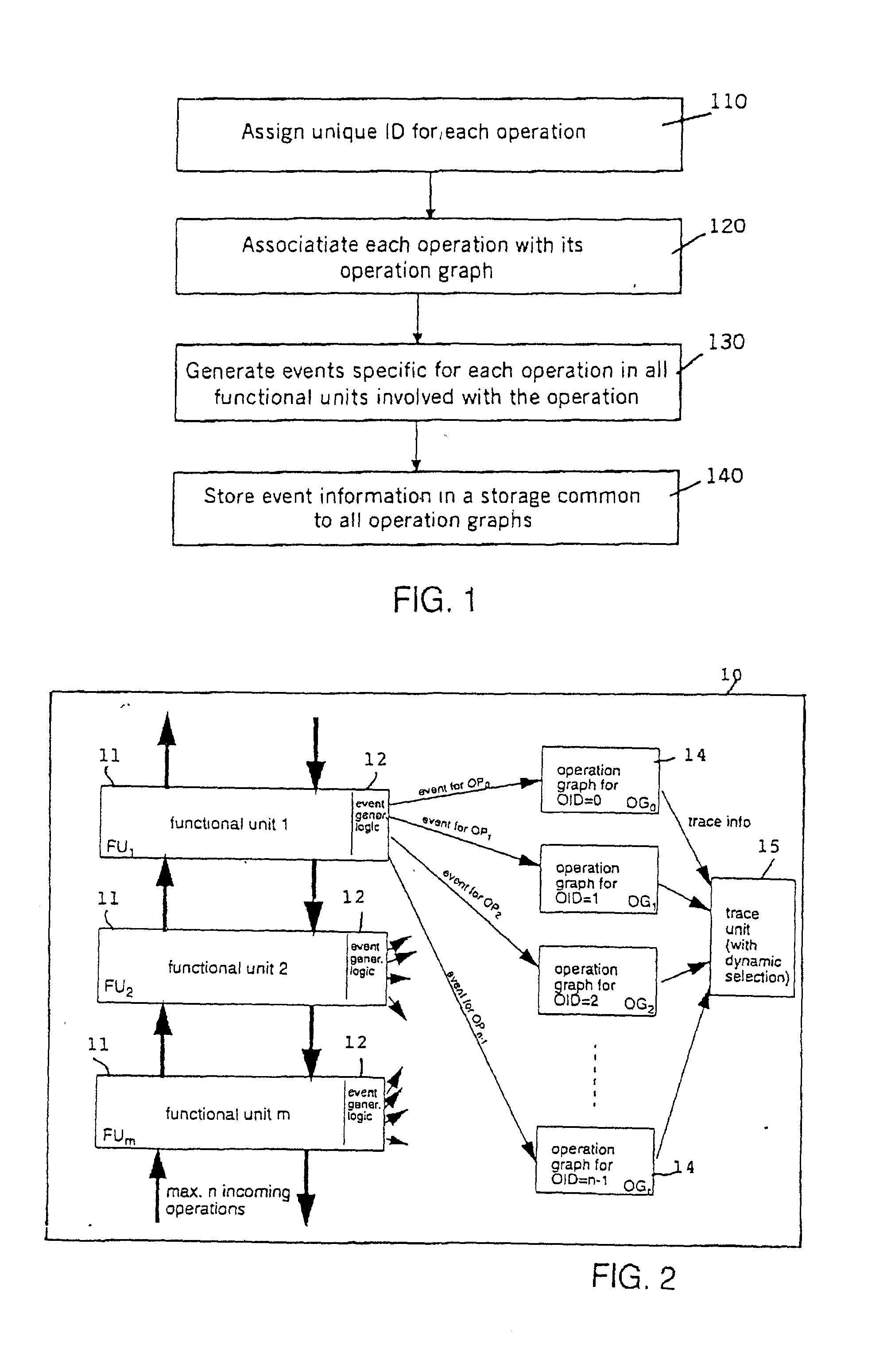Operation graph based event monitoring system
a graph and event monitoring technology, applied in the field of computer system hardware, can solve the problems of limited practical value of location centric approach, complex control logic of this data flow, and only possible error analysis
- Summary
- Abstract
- Description
- Claims
- Application Information
AI Technical Summary
Benefits of technology
Problems solved by technology
Method used
Image
Examples
Embodiment Construction
[0039] The following is a very high level summary and discussion of present invention relative to the current state of the art in tracing.
[0040] The state-of-the art in tracing involves a three stage process:
[0041] 1. Observation
[0042] 2. Reduction
[0043] 3. Storing the reduced information
[0044] Steps 1 and 3 are generally trivial, the critical step being the reduction step.
[0045] An essential point is that the trace stores redundant information. The information is redundant in the sense that if the states of all of the latches are stored in every cycle in an ideal trace, then the information in the real trace would be a just a subset of the information in the ideal trace.
[0046] The present invention provides an operation graph associated with each traced computer operation which is not available even with an ideal trace. The operation graph is a language recognizer which recognizes the set of legal subtask execution sequences associated with each traced computer operation. In other ...
PUM
 Login to View More
Login to View More Abstract
Description
Claims
Application Information
 Login to View More
Login to View More - R&D
- Intellectual Property
- Life Sciences
- Materials
- Tech Scout
- Unparalleled Data Quality
- Higher Quality Content
- 60% Fewer Hallucinations
Browse by: Latest US Patents, China's latest patents, Technical Efficacy Thesaurus, Application Domain, Technology Topic, Popular Technical Reports.
© 2025 PatSnap. All rights reserved.Legal|Privacy policy|Modern Slavery Act Transparency Statement|Sitemap|About US| Contact US: help@patsnap.com



